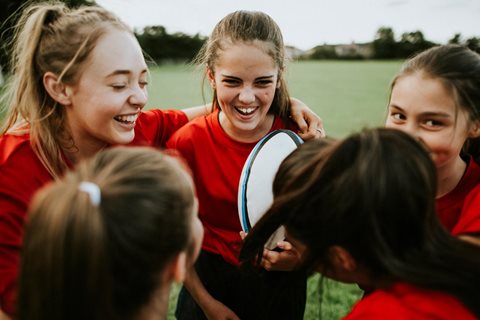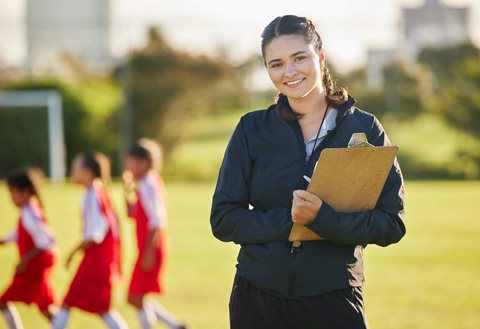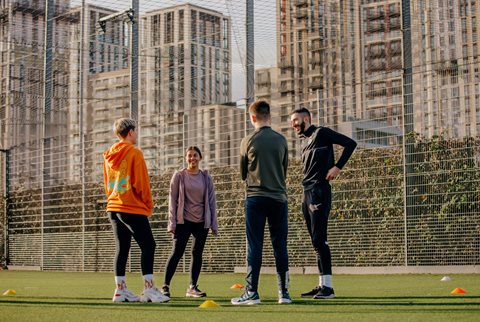Our cookies
We use essential cookies to make our website work smoothly for you. To make sure we're always improving, we'd like to use analytics to track how people use the site. We won't set non-essential cookies unless you give us permission. You can find more information about all the cookies we use in our Privacy and Cookie Policy.
Some cookies are a must for our website to function properly. If you turn off essential cookies, it may affect how you experience our site.
The non-essential cookies we use help us understand how you use our website and make improvements to enhance your experience.
Empowering Her Game: Understanding the Nuances of Coaching Girls in Sport
Head of Insight and Innovation at Women in Sport Tanya Martin and Shotgun Coach Georgina Roberts share their knowledge and experiences on crucial need-to-know topics surrounding girls’ participation in sport and physical activity, including action that coaches can take to tackle persistent barriers to involvement.
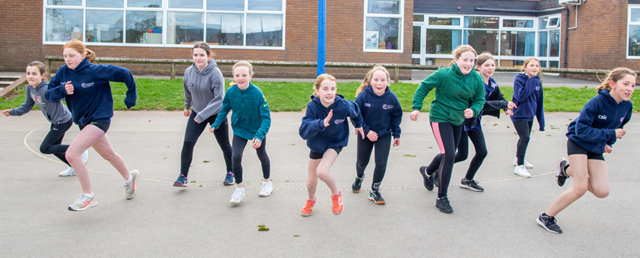
Included in this article:
- How to get girls involved in sport?
- The impact of a judgement-free environment
- How to keep girls playing sport
- Child’s right to play
- How to include play in sessions
- What are the barriers for girls in sport?
- Changing parents’ preconceptions
- How to combat drop-off as a coach?
- Download FREE Resource: Coaching Resolutions - Voice
by Charlotte Potterton
Head of Insight and Innovation at Women in Sport Tanya Martin has a wealth of stats at her fingertips on girls’ involvement (or non-involvement, as the case may be) in sport.
It probably won’t surprise you to learn that they don’t paint the brightest picture. Research released in 2022 by Women in Sport found that more than one million teenage girls who once considered themselves as ‘sporty’ ultimately disengaged from sport following primary school.
But that isn’t the full story – or, if you like, the finished canvas. In the shadowy corners are the plethora of reasons why so many girls drop out of sport. By developing a better understanding of those reasons, coaches can put themselves in the best possible position to change that narrative.
How to get girls involved in sport
Creating an inclusive, welcoming environment is key to encouraging more girls to consider getting involved in sport or physical activity. They need to feel valued in those spaces.
"A sense of belonging is really crucial,” Tanya explains, “because we’ve all felt like a fish out of water at some point and know how awkward it feels. If you feel like you’re going into something where you don’t belong, you’re not going to be confident, you’re not going to enjoy it."
For too many girls, there’s still a preconception that sport isn’t for them, and this can unintentionally be exacerbated by the people that they’re closest to, personal experiences or external influences, such as the media.
"It could be parents thinking that girls are fragile. We’ve also heard stories of boys being able to practice on the game pitch, while girls must play their matches on the practice pitch, sending subtle messages that the boy’s team is more serious or matters more. And in many sports, we hear about male athletes more frequently.
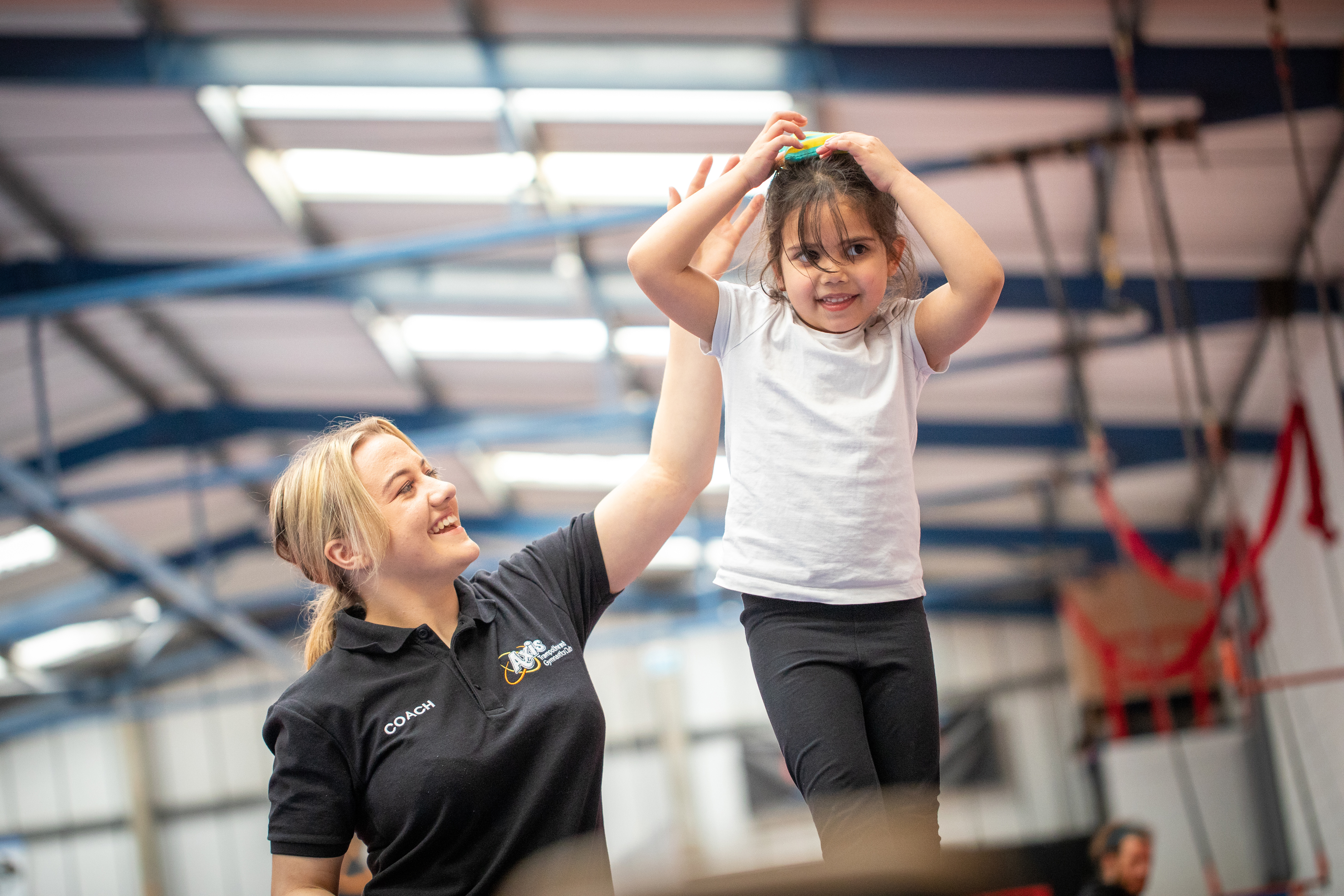
All this tells girls that they don’t belong. Then when they don’t want to do sport, we’re interpreting that as them being less interested, as we’re missing those subtle, demotivating messages. We need to work on those messages as a society as well as within sport to increase girls’ sense of belonging."
Tanya Martin Women in Sport
Shotgun Coach Georgina Roberts agrees that establishing the right environment is instrumental in helping girls feel like there is a place for them in sport. She also suggests that taking the time to explain what to expect at a session can be helpful.
"It’s about knowing that the environment they’re in is a safe and supportive one. In shooting, we need to educate first and make sure that they know how the sport and guns work so that they’re confident that they’re not going to hurt themselves. There are a lot of stereotypes around shooting, so it’s about making sure that they know that they will be okay, and that we’re there for them."
Top Tips on Encouraging Girls in Sport
Find out ways to encourage girls to participate in sport and physical activity.
DOWNLOAD NOW
The impact of a judgement-free environment
Tanya and Georgina agree that a key component of a supportive environment is one in which people can take part without fear of judgement.
"Judgement is one of the key themes that goes right from little girls aged 5 to older women in later life," Tanya explains. "For younger girls, what we hear is that they expect to get skills right away. If they can’t kick a ball right, if they can’t get a goal straightaway, they get really disappointed and put a lot of pressure on themselves. I think that comes from those messages telling them that they don’t belong in the first place, and especially not if they’re not really good."
This concern is then exacerbated by natural biological changes, which is often an emotionally fraught and confusing experience.
"Girls going through puberty don’t want to be under a spotlight, they don’t want to be seen by anyone," Tanya says. "They’re worried about practical things like leaks, they’re worried about how to manage their periods while being active, but they’re also going through emotional and psychological changes, and don’t want to be the centre of attention."
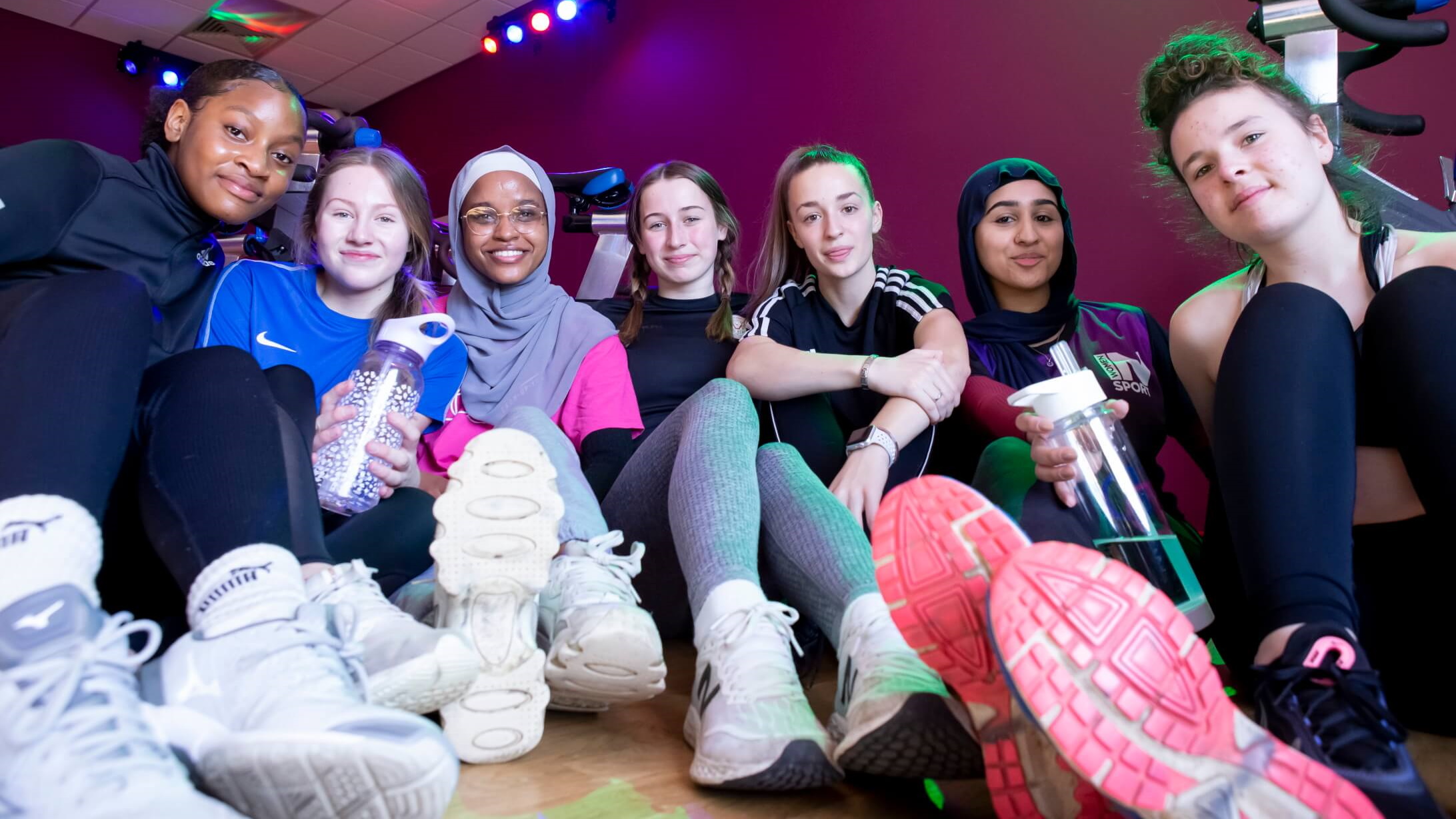
How to keep girls playing sport
Everyone has a right to be heard
From the range of focus groups run by Women in Sport, Tanya Martin highlights an indispensable piece of advice: listening is vital and can have a phenomenal impact.
"I get to speak directly to women and girls about their experiences, which range from being really active and really enjoying it, to those who are very inactive, and have had bad experiences in sport.
"They all have this sense of relief when they’re listened to. It’s as if they feel like they haven’t been listened to about the serious issues that they’re facing.
"As well as being willing to broach these conversations with the girls at your sessions, it's also important to create an environment in which they know that you're asking out of genuine curiosity and that they're being heard without judgement. That will inspire sincerity and help to establish an atmosphere of trust.
"It’s about the culture that you create," says Tanya. "It’s establishing that safe space for girls to talk. If they don’t feel like they can say what’s on their mind without repercussions, they won’t do that. That safe space is emotional but can also look like having a specific time for people to share their opinions."
Flexibility is key here: once you know what they need, thinking of ways to adapt your sessions to ensure that there’s time and space for them to share could then be incorporated into your planning process.
If you ask, that's a sign that you're listening. If you don't ask, they might not be clear that you want to know. You'll probably hear from the confident and loud ones, who will tell you no matter what, but those quieter ones, it might be that you need to ask them, and if it's something sensitive, to consider asking them in a quieter space that's not in front of anyone else."
Tanya Martin Women in Sport
"It might be that they want to speak alone, or it might be that they want their best friend with them as a backup, or to give them confidence. Allowing whatever works for the girls is really valuable."
Georgina adds that being a good listener can contribute to people feeling as if they belong, which can make a significant difference in improving participation.
"It makes people feel valued, and it also demonstrates that you’re really interested.
"There are so many experiences that I’ve had where sometimes people haven’t necessarily been in the right headspace to receive advice. They just need you to listen and know that you’re there, ready to hear whatever it is that they need to talk to you about, whenever they need to talk about it."
Tanya asserts that this must be the top priority, "…especially for children. They don’t always feel listened to, so ensuring that they do is important."
Child’s right to play
One of the foundational principles of the Children’s Coaching Collaborative is that children have a right to play. Asserting that this is "important for child development," Tanya explains that opportunities to play support development in sport and physical activity as well as offering girls a crucial antidote to pressure felt in other areas of their lives—including through damaging and restrictive gender stereotypes. This also contributes to creating a safe, supportive space in which girls have the freedom to develop and grow in ways that are unique to them.
"For girls, there are still societal expectations that they do certain things and live within certain structures," Tanya says. "We know statistically that girls are more likely to feel pressured to do well at school than boys, right through primary and secondary school. Those expectations can also be felt in care responsibilities, because girls are still more likely to have to care for younger siblings than boys.
We’re tackling the low-hanging fruit of outright sexism and misogyny, but those subtle messages that control how girls and women live their lives are still there, and against that backdrop, play becomes very important."
Tanya Martin Women in Sport
One of the ways in which play is particularly valuable for girls is in the formation of identity through pressure-free opportunities to discover what they really enjoy. This is enabled by chances to make independent choices and explore new experiences. (For more on this, take a look at the Women in Sport Research Report: Reframing Sport for Teenage Girls: Building Strong Foundations for their Futures.)
"It allows girls to be themselves,” Tanya says, “and as they’re developing their identities, it allows them to explore who they are in an unstructured environment, and to find out what they love and what really drives them."
How to include play in sessions
How you incorporate opportunities for play into your sessions will naturally differ depending on your context. For Georgina, gamification within a safe structure presents an obvious solution in the world of shooting.
"Play, for me, is essential for learning and development. If you’re not enjoying it, you’re not really engaging. We take skills and drills and training programmes, and turn them into competitions within teams, or use them as team-building exercises."
Where possible, she recommends giving the girls that you coach autonomy to make their own decisions about how they would like to spend each session.
"Giving people the freedom to scope out their own training for the day, you can find out from them what exactly they would find fun, and how they would include fun in their training programmes. As an athlete myself, that’s what I find most instructive."
These opportunities for play create a vital sense of enjoyment that can be essential at more challenging times.
Sport can be really tough, especially when it gets really difficult and really hard, so by making it as fun as possible, and giving them control over their own learning, I hope that we can encourage them to stick with it as long as possible, and hopefully learn to love the process, rather than just loving the outcome."
Georgina Roberts Shotgun coach and athlete
What are the barriers for girls in sport?
Building your knowledge of the people at your sessions is key. If you can understand what they enjoy – and, conversely, what barriers they may have faced or be facing to participation – then you can ensure that your environment enables them to consistently take part and, arguably more importantly, have fun doing it.
Tanya recommends checking in regularly with the girls that you coach so that “…you know how you can support them to overcome any limitations to getting involved.”
"That might be that their parents don’t understand the value of sport, for example. If you know that, then you can think about how you can work with their parents to improve that."
The logistics of getting to your session can also present an insurmountable barrier, particularly when working with girls. They’re likely to be juggling conflicting demands on their time, or simply don’t have access to reliable transport.
"It might be that they have care responsibilities that limit their free time. It might even be that they need support getting to and from the session. In winter, when it’s dark, a lot of girls are intimidated by walking alone.
"Can you help set up a buddy system to ensure that everyone arrives safely?"
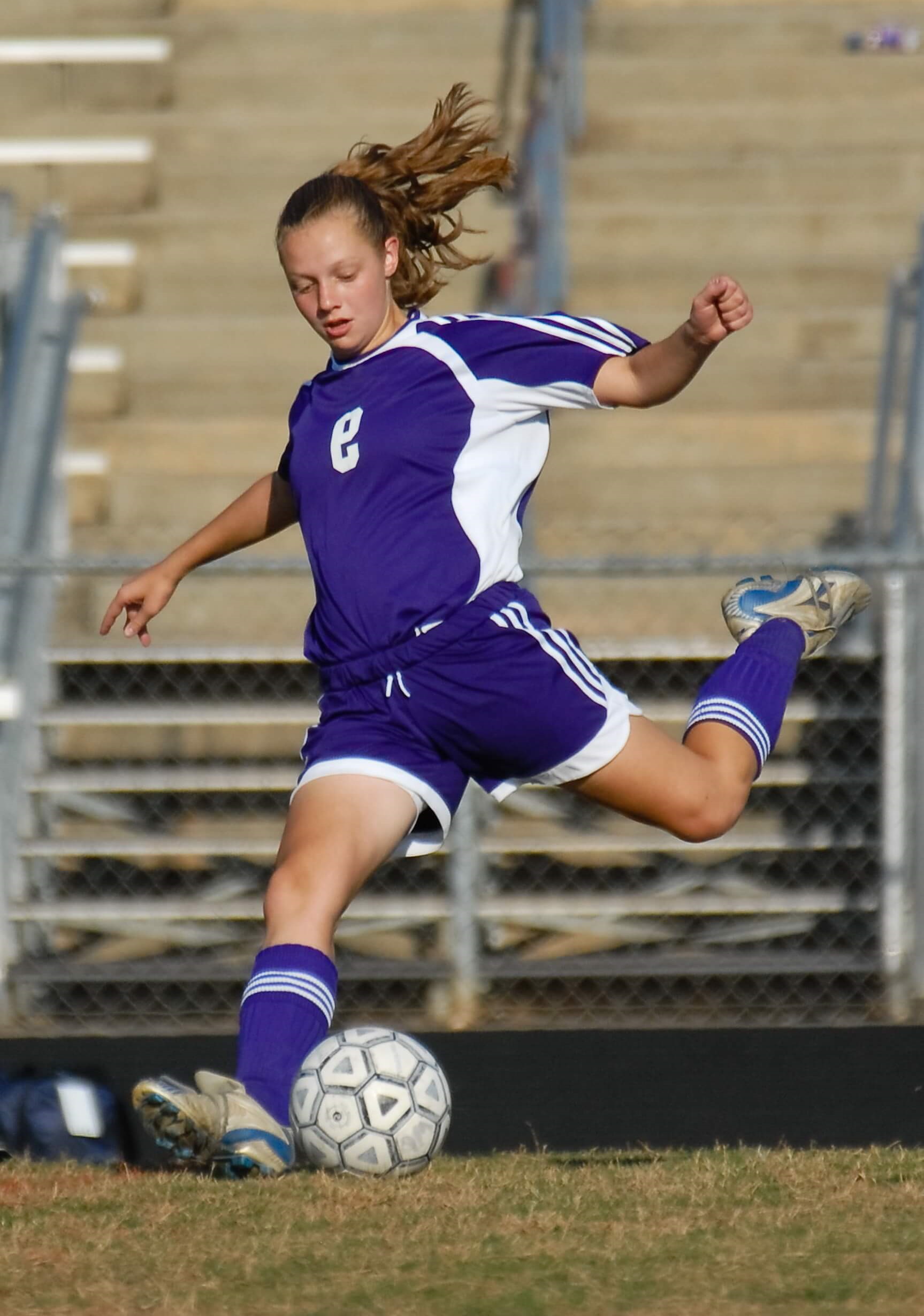
This plethora of potential limitations underlines the importance of finding out about the responsibilities that the girls you coach regularly shoulder, as even by alleviating just one of them, you’re removing a barrier to participation.
And what’s the best way to find out how you can help?
Tanya offers a simple solution: "You’re only going to know about those limitations and truly understand what girls need if you ask them."
For more insight into the barriers that exist and how they can be combatted, have a read of the Women in Sport Research Report: Reframing Sport for Teenage Girls: Tackling Teenage Disengagement.
Changing parents’ preconceptions
Parents who don’t yet understand the value of participation in sport and physical activity can unintentionally be a barrier to involvement. Often, Tanya asserts, this happens because parents have had a negative experience themselves.
"They might feel like if their child isn’t having a good time, they’ll take her out of the session rather than encouraging her to carry on, because they don’t want her to have a similar experience to them. It might feel like protecting her better to pull her out of sport."
Tanya recommends working with them to change this damaging narrative.
Taking part in sport benefits girls in ways that go beyond physical health, and can give them a great relationship with their body and an understanding of what it can do, which is especially important in a society and with social media that values what bodies look like over what they can achieve. If we can work with parents and everyone who supports girls to help them understand this, then we will start to see the value of girls in sport go up."
Tanya Martin Women in Sport
No coaches available
Another barrier to participation can be a lack of female coaches.
"I was giving evidence at a Tower Hamlets committee on women and girls," Tanya says, “and the teenage girls there were both Muslim. They offer female-only sessions, but there aren’t always female coaches to lead them. For some girls, having a female coach can mean the difference between being able to take part and not being able to take part."
How to combat drop-off as a coach?
"The primary to secondary school transition is the start of where we see drop-off, which then really ramps up around the age of 14," Tanya says.
(For more on the facts around drop-off, have a read of UK Coaching's expert opinion, Girls Participation in Sport: When Does the Drop-off Begin?)
When I asked Tanya why drop-off is so common, she suggested that the barriers that we’ve discussed already, ranging from damaging stereotypes to overwhelming demands of time, remain and are amplified by issues such as puberty, body image and lack of confidence, which frequently manifest in secondary school alongside academic concerns.
"One of the consequences of puberty is that your body changes, and girls might lose confidence in their abilities. Exams are also looming large in secondary school, and girls may feel as if they need to reduce time spent on other activities, even though we know that sport can improve focus and learning outcomes.
"Then there’s the fear of missing out on time with friends. When girls are in secondary school and starting to make their own choices, sport goes up against other options."
As such, prioritising enjoyment is a powerful weapon in the fight against drop-off, and has to be a consideration when planning sessions.
"Girls need to see the reason why they should take part in sport, rather than go to the cinema with their friends, for example.
"An environment in which they can have fun is essential."
Other resources you may like...
About the contributors
Tanya Martin is Head of Insight and Innovation at Women in Sport, a charity with a 40-year record of success in securing change based on its deep understanding of the needs and aspirations of women and girls.
Tanya leads the charity's influential 'Reframing Sport of Teenage Girls' body of work and heads up wider research studies to understand the impact of significant life stages on women and girls' sport and exercise journeys, including in the primary years, and through midlife and menopause.
Georgina Roberts has represented Wales and Great Britain at Olympic Trap shooting since she was 17.
As a shotgun coach, Goergina has found her passion for helping others achieve their goals, both privately and on the British Shooting Talent Pathway.
This passion to help others is also realised through her work as an ambassador for nu,merous sports charities, as well as her position as a non-executive director for the WCTSA.
SHARE THE MOVEMENT
Help spread the word by sharing this website with fellow coaches!

